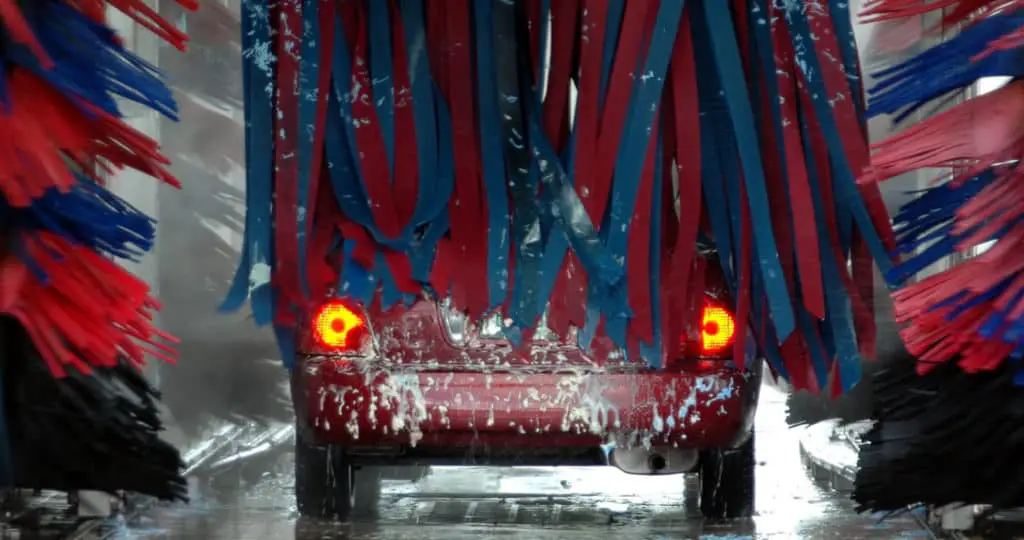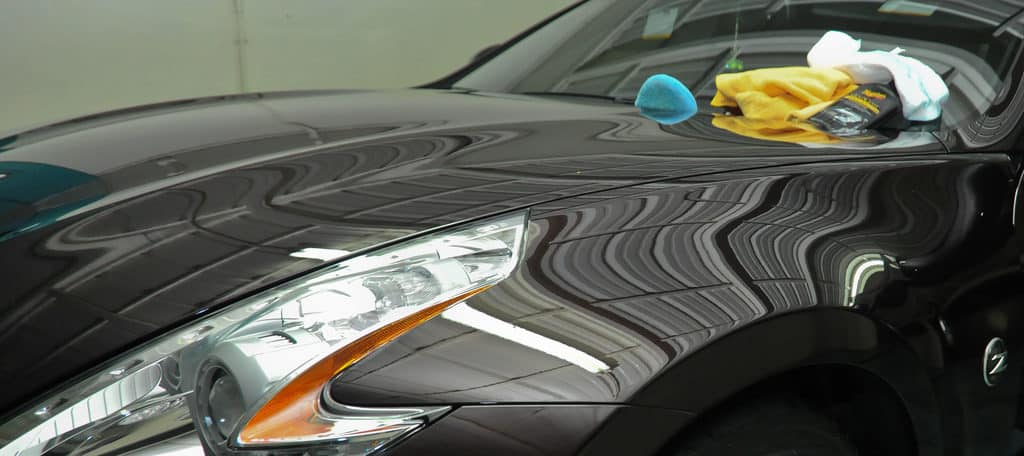- What Is The Two Bucket Car Wash Method (Beginners Guide) - July 2, 2021
- Will Washing Car Remove Wax? What You Need To Know - December 3, 2019
- What Causes Scratches On Car Paint: You Should Know This - April 29, 2019
Last Updated on March 20, 2025 by Nate Schnell
Owning a car inevitably means dealing with scratches. Whether it’s an unfortunate encounter in a parking lot or a wayward shopping cart, these scratches diminish the beauty and value of your vehicle. Thankfully, there are several practical ways to fix them, ranging from simple DIY methods to professional solutions.
Types of Car Scratches and Why They Matter
Before jumping into scratch removal, it’s helpful to understand the kinds of scratches your car can get. Generally, there are two types:
Surface scratches, which only affect your car’s clear coat, are usually light and minor. You might see them from improper washing or minor scrapes.
Deeper scratches penetrate beyond the clear coat, reaching the paint or even the metal underneath. These scratches are more severe because they can lead to rust or corrosion if not addressed promptly.
If you’re unsure about the depth of a scratch, there’s a straightforward test: gently run your fingernail across it. If your nail catches, it’s a deeper scratch; if it glides smoothly, it’s superficial.
Understanding the depth is crucial because deeper scratches can lower your car’s resale value and lead to more serious problems down the road.
Preparing Your Car for Scratch Removal
Before tackling a scratch, you need to clean the affected area thoroughly. This prevents dirt and grime from causing further damage during the removal process.
Start by rinsing the scratched area with water. Then, gently wash with car soap and a soft microfiber towel. Avoid abrasive materials, as these can worsen scratches. After washing, dry the surface completely.
If the scratch is deep, you may need additional preparation, like carefully sanding the area with fine-grit sandpaper and then cleaning with isopropyl alcohol. Always proceed gently, as excessive sanding can harm your car’s paint.
DIY Methods to Remove Car Scratches
Many minor scratches can be fixed right in your driveway. Here are three reliable techniques:
Toothpaste Method
Believe it or not, toothpaste is a quick, inexpensive way to remove minor scratches. Since toothpaste contains mild abrasives, it’s ideal for polishing out small surface marks.
To try this, apply a small dab of toothpaste (plain white, not gel) to a soft, damp cloth. Rub it gently onto the scratch in circular motions for about 30 seconds. Then wipe it clean with another damp cloth. If the scratch isn’t completely gone, you can repeat the process.
Sanding and Buffing
For slightly deeper scratches, fine-grit sandpaper (around 2000 grit) can help smooth things out. Gently wet-sand the scratch, using water to keep the area lubricated. After sanding, dry the area and apply a rubbing compound. Buff gently with a microfiber cloth until smooth. Finish by waxing the area for protection.
Scratch Removal Products
Dedicated scratch removal products from brands like Meguiar’s, Turtle Wax, or Chemical Guys offer a more straightforward solution. Apply the product as directed, usually by gently rubbing it onto the scratch and buffing until it fades. This method often provides professional-looking results without much effort.
When to Seek Professional Help
Some scratches—particularly those that reach through the paint—are difficult to fix at home. Professional auto body shops can handle these deeper scratches, ensuring a high-quality repair that matches your car’s original paint job.
When choosing a professional, always ask around for recommendations or check online reviews. Prices for professional scratch removal vary based on severity, but typically range from $50 to $300. Getting multiple quotes helps you balance quality and cost effectively.
Advanced Techniques for Deeper Scratches
For confident DIYers, deeper scratches can sometimes still be tackled at home using more advanced techniques.
Polishing Compounds
Professional-grade polishing compounds help smooth out scratches. Apply a small amount of compound to a microfiber towel, then buff in circular motions until the scratch blends into the surrounding paint. Follow this up with wax for extra protection.
Wet Sanding and Touch-Up Paint
If scratches reach deeper layers, you might need to use touch-up paint. Get a paint kit from your car’s manufacturer to ensure a perfect color match. After thoroughly cleaning the area, apply paint in thin layers, allowing each coat to dry before applying the next. Once dry, lightly wet-sand with very fine sandpaper, buff with polish, and finish with a protective wax.
These techniques require patience and a steady hand but can yield excellent results.
Protecting Your Car After Scratch Removal
After successfully removing a scratch, take steps to protect your car’s finish:
First, apply a quality wax or sealant to protect against future scratches and contaminants. Regular waxing every three to six months will keep your paint looking its best.
Second, maintain cleanliness. Dirt and debris on your car’s surface can cause new scratches. Regularly wash your car using a gentle soap, microfiber cloths, and always dry gently.
Consider additional protective measures, such as ceramic coatings or car covers, especially if your car is frequently parked outside. These options provide extra protection from environmental hazards.
Recommended Products and Tools
From personal experience and feedback from car enthusiasts, here are a few products and tools I recommend for effective scratch removal:
- Scratch Removers:
- Meguiar’s Mirror Glaze Ultra-Cut Compound for deeper scratches.
- Chemical Guys VSS for lighter scratches.
- Turtle Wax Scratch Repair & Renew for budget-friendly fixes.
- Tools:
- Microfiber towels (essential for polishing without scratching)
- Foam applicator pads (for even application)
- Dual-action polisher (optional, but great for achieving professional results)
- Paint touch-up pen (for deeper scratches)
All these products are readily available online or at your local auto parts store.
Frequently Asked Questions
Here are quick answers to some common concerns about car scratch removal:
Can household items fix scratches?
Yes, toothpaste or baking soda can remove very minor scratches. However, commercial products usually deliver better results.
Are deeper scratches fixable at home?
Yes, with patience and care, but the process can be challenging. If you feel uncertain, professional help might be a safer choice.
How can I remove scratches without harming the paint?
Always clean first, use gentle products specifically designed for automotive paint, and follow instructions carefully. Avoid aggressive rubbing or harsh chemicals.
How much does professional repair cost?
Typically between $50 and $300, depending on severity and location.
Final Thoughts
Scratches are part of owning a car, but they don’t have to be permanent. With proper preparation, the right products, and some patience, you can restore your car’s shine effectively—often without breaking the bank. Regularly maintaining your vehicle’s finish afterward will also ensure it stays looking great and maintains its value for years to come.



